Ladder snake with a slim solar
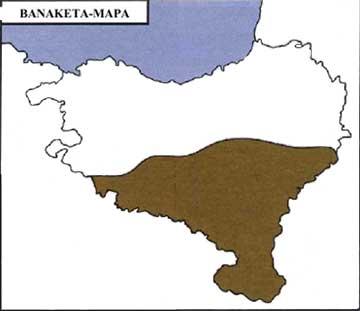
When talking about snakes, most of the time there are feelings of panic, disgust, emotion, etc. I'm not going to start here looking for hidden reasons for these feelings, but they all make the snake world often unknown to the stray or anyone living in the hamlet or on the mountain.
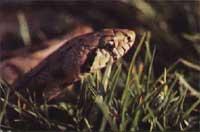
However, fans of herpetology know perfectly well that snakes are probably the most wonderful and elegant animals of the art of our fauna, and that in case there is occasion for it can give long hours of enjoyment of their movements and activities.
The ladder snake ( Elaphe scalaris) is one of the most beautiful and slender snakes that can be seen in our country. It is a long serpent that, although usually about 1 m, can reach 1.5 m, forming a fifth of its total length. The dorsal scales have launas that form 27 lines in the center of the body (see figure 2). Ventral scales are usually wide and their number ranges from 200 to 220. Finally, the subbold scales, which extend from the anus to the back in the ventral part, are organized in two rows of 48-68 specimens.

The head of the ladder snake is wide and well defined, in which two wide parietal scales stand out (see figure 1). In addition, the front scales pronounced in the shape of a shield has a pointed tip towards the back. On both sides you can see the supraoculars (one on each side) and two prefronts (wider than long) and two internasals. The reavestral scales, longer than wide, is also remarkable, since it extends back between the internasals and reaching up to half of them.

As for coloring, adults have a uniform light brown dorsal side, with two darker parallel longitudinal lines on both sides of the midline. In the young specimens these two lines are joined by numerous transversal lines, which represent a kind of staircase, and to this snake comes its original name. On the other hand, on both sides of the head, and from the eye back and out, it has a marked dark line. As for the ventral face, in adults this is usually white or yellowish, without scars. In young people, however, and exceptionally, dark scars can be seen in some specimens.
The ladder snake is a terrestrial reptile and dryer, which works by day, and although it normally lives on the ground, it shows great ability to ascend to trees and bridges in search of a hunting piece or simply wanting to sunbathe. And is that this snake is super sunny and can be for hours enjoying the hot rays sent by the wide hand of astro.
His movements are fast and slender, which makes us a great hunter. His pieces include micromammals, birds and chickens, lizards and young lizards, which are sacrificed by industry before ingestion. He is also very aggressive and has no doubt that he died with the greatest aggressiveness if he is suspected of being in danger. However, the ladder snake has no poison and its bites have no serious consequences, but they can often be enough to scare away the aggressor.
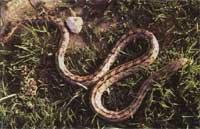
The heat occurs in late spring, between May and June. Three or four weeks after fertilization, the female will place between 6 and 24 eggs in a hole or under the soil stone. These eggs have a rough and yellowish structure of 2 x 5 cm. The fires born in late summer will have a length of 20 cm to the world and from that very moment will be able to live without need of help. Although during the first months grasshoppers and similar insects will be hunted, as they grow they will be discovering ever larger species, progressively becoming as hunters as their parents.
But the stair snake is not only a hunter but also a prey, and not only a snake eagle or other predators. And it is that the flesh of this serpent is considered by humans as a precious food, and although now it is not very common, it was formerly eaten. On the other hand, in some villages of the Ribera has been attributed the ability to heal the fats of the ladder snake, which is used as raw material in remedies to form wounds.
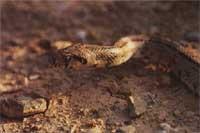
This reptile is found above all in stony and dry areas with bushes, pastures, isolated bushes, hedges between agricultural areas, or in wall holes, always outside humid and cold environments and therefore outside the mountainous areas.
As for its geographical distribution, the stair snake is a Mediterranean species located in the southeast of the French State and resident in the Iberian Peninsula, although in the latter, it is missing in the northern humid regions. In Euskal Herria we can also find it in the Mediterranean region: In Alava near the Ebro and in Navarre in the middle and south.
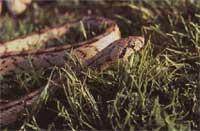
However, this snake is becoming increasingly invisible due to the regression that the species suffers. The causes of this reduction process can be found in the violent transformation of the environment in which their habitats are located. The fact is that agricultural fields have replaced natural vegetation in most places, and on the other hand, extensive agriculture has reduced the number of hedges between areas and small forests and shrubs, being increasingly reduced residential areas of this elegant snake. Therefore, and as in other species, the protection of the ladder snake requires the area, and hedges, especially the shrubs and smaller forests.






